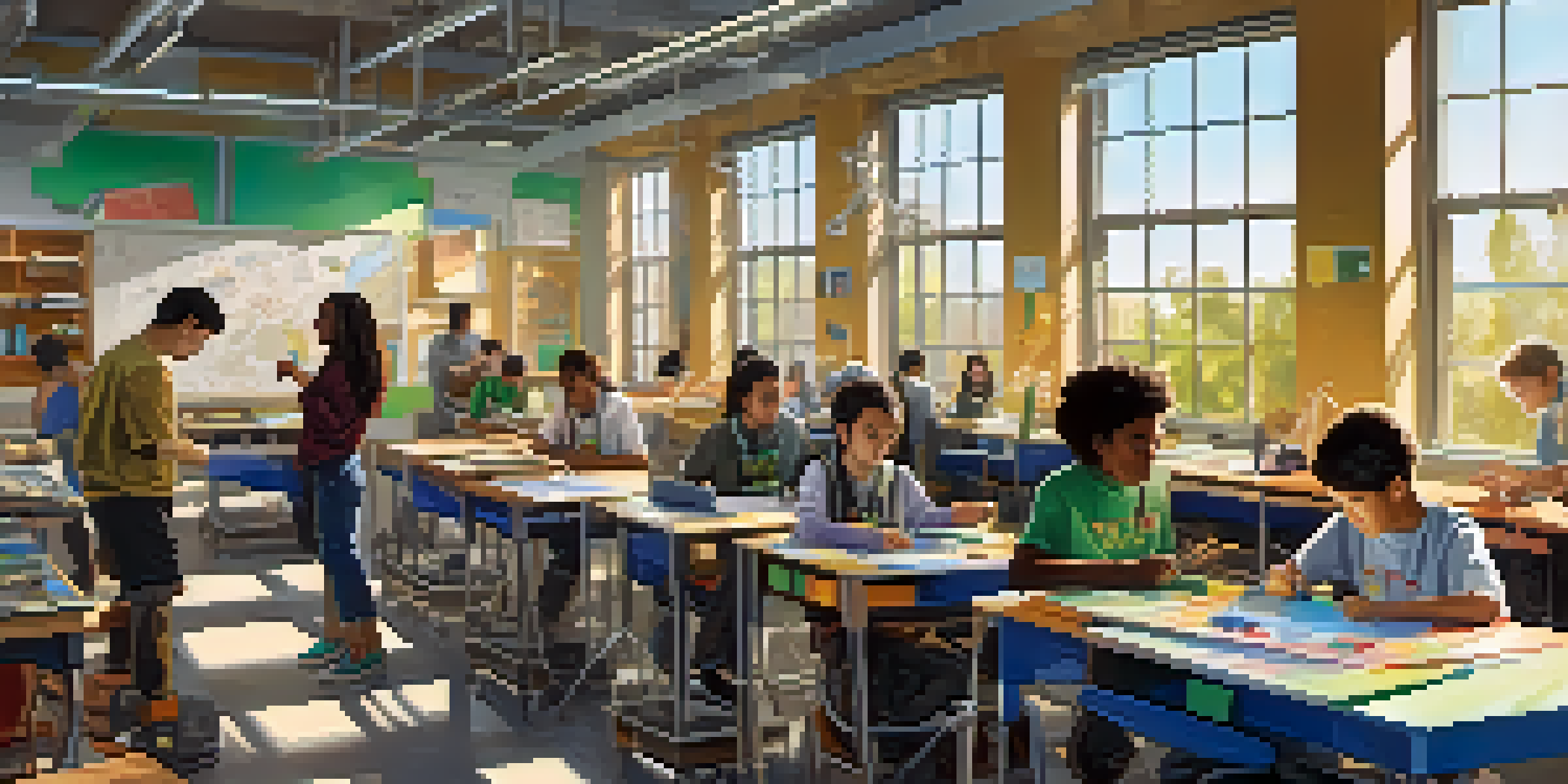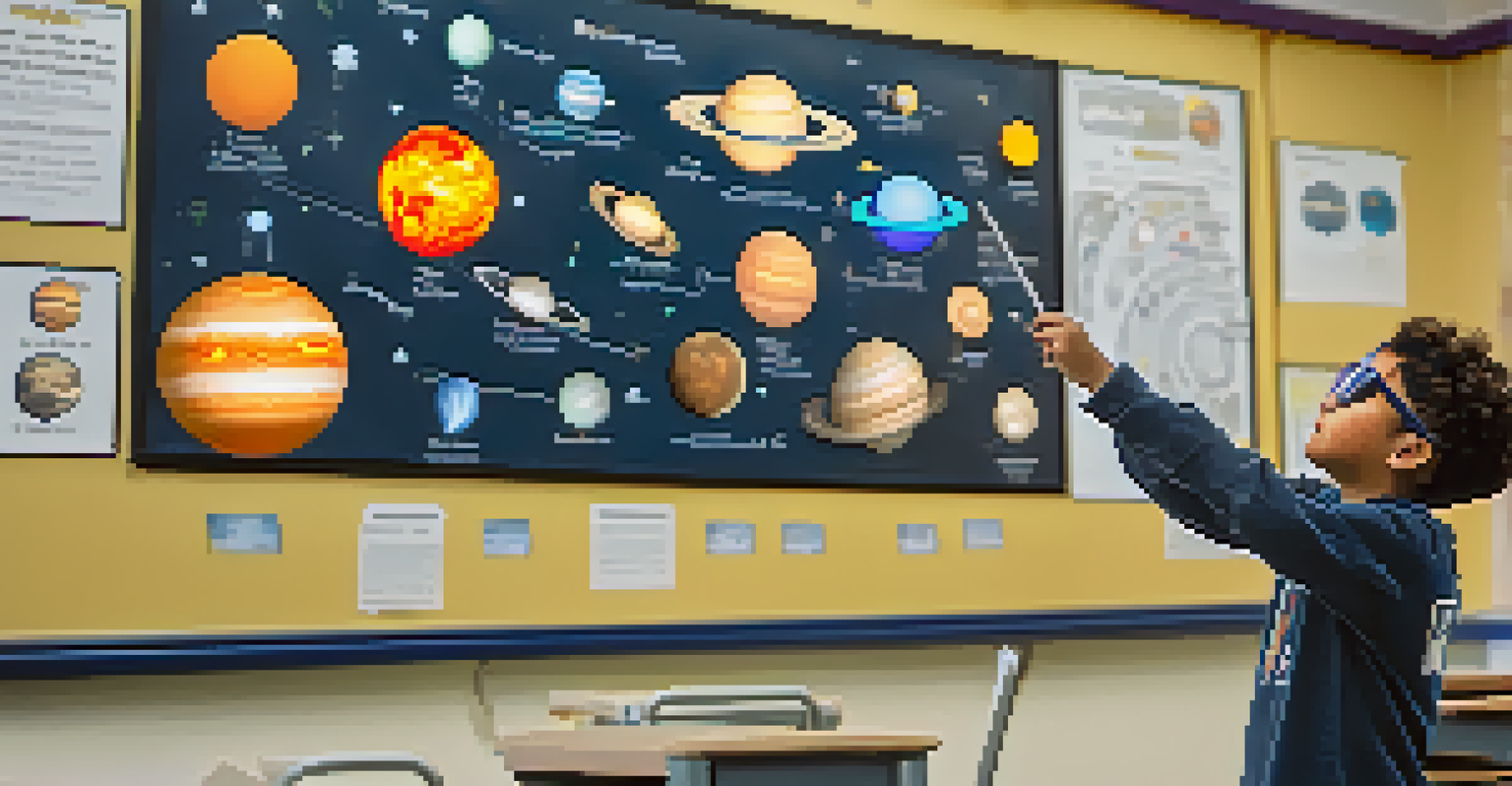Using Technology to Create Interactive STEM Learning Experiences

The Importance of Interactive Learning in STEM Education
Interactive learning is crucial in STEM education because it fosters engagement and critical thinking. When students participate in hands-on activities, they are more likely to grasp complex concepts and retain information. For instance, instead of reading about the laws of physics, students might conduct experiments that demonstrate these principles in action.
Tell me and I forget. Teach me and I remember. Involve me and I learn.
This method also encourages collaboration among students, allowing them to share ideas and learn from one another. Group projects, such as building a simple robot, can transform abstract concepts into tangible experiences. Ultimately, interactive learning not only makes education more enjoyable but also prepares students for real-world challenges.
As educators incorporate technology into their interactive learning strategies, they create opportunities for deeper understanding. By utilizing tools such as simulations and virtual labs, students can experiment in ways that would be impossible in a traditional classroom setting. This approach helps bridge the gap between theoretical knowledge and practical application.
Leveraging Virtual Reality for Immersive Learning
Virtual reality (VR) is revolutionizing how students experience STEM education. With VR, learners can explore complex environments, like the depths of the ocean or the surface of Mars, without ever leaving the classroom. Imagine a biology student dissecting a virtual frog or an engineering student assembling a bridge in a simulated world; these experiences can enhance comprehension significantly.

Moreover, VR can cater to diverse learning styles. Visual learners benefit from seeing concepts in 3D, while kinesthetic learners engage with interactive elements in the virtual space. This tailored approach ensures that all students can connect with the material in a meaningful way.
Interactive Learning Boosts Engagement
Hands-on activities in STEM education enhance student engagement and understanding of complex concepts.
As VR technology continues to evolve, its accessibility is increasing too. Schools can now find affordable VR solutions that fit their budgets, making it possible for more students to experience the breadth of STEM education through this innovative medium.
Using Augmented Reality to Enhance Hands-on Learning
Augmented reality (AR) overlays digital information onto the real world, creating an engaging learning environment. For example, students can use AR apps to visualize the solar system in their classroom, turning a flat poster into an interactive experience. This additional layer of information not only captivates students but also deepens their understanding of complex subjects.
Education is not the filling of a pail, but the lighting of a fire.
In STEM education, AR can bring abstract concepts to life, allowing students to manipulate and interact with 3D models. Imagine a chemistry class where students can see molecular structures in real-time and adjust their configurations. This hands-on approach not only makes learning more enjoyable but also helps solidify concepts through active participation.
Furthermore, AR can encourage exploration and curiosity. Students can embark on virtual field trips, visiting historical sites or scientific labs, which would otherwise be out of reach. This ability to explore enhances their learning experience and fosters a passion for STEM subjects.
Incorporating Gamification to Boost Engagement
Gamification is an effective strategy for making STEM education more engaging. By integrating game-like elements into the learning process, educators can motivate students to participate actively. For instance, using points, badges, or leaderboards can encourage friendly competition, driving students to excel in STEM subjects.
This approach not only makes learning fun but also promotes problem-solving skills. Students can tackle challenges and puzzles that require critical thinking, reinforcing their understanding of the material. Imagine a math class where students solve real-world problems in a game format; this method can transform traditional learning into an exciting adventure.
Virtual Reality Transforms Learning
VR technology allows students to explore intricate environments, making abstract STEM concepts tangible and engaging.
Moreover, gamification can cater to different skill levels, providing personalized challenges for each student. This adaptability ensures that all learners can progress at their own pace while still being engaged. Overall, gamification can create a dynamic learning environment that inspires students to embrace STEM.
Utilizing Online Platforms for Collaboration and Learning
Online platforms have opened new avenues for collaborative learning in STEM education. Tools like Google Classroom or Microsoft Teams enable students to work together on projects, share resources, and provide feedback, regardless of their physical location. This flexibility is especially valuable in today’s educational landscape, where remote learning is becoming more common.
Through these platforms, students can also connect with experts and peers from around the world, expanding their perspectives. Imagine a physics class collaborating with students from another country to solve problems; this global interaction enriches their learning experiences and fosters cultural exchange.
Additionally, online platforms often come equipped with resources and tools that enhance the learning process. From interactive simulations to discussion forums, students have access to a wealth of information at their fingertips. This accessibility encourages self-directed learning, empowering students to take charge of their educational journeys.
Embracing Coding and Robotics in STEM Curriculum
Integrating coding and robotics into the STEM curriculum equips students with essential skills for the future. As technology continues to evolve, understanding programming languages and robotic systems becomes increasingly valuable. By introducing these concepts early, educators can spark interest and enthusiasm in students, paving the way for future innovators.
Coding teaches students logical reasoning and problem-solving skills, which are applicable across various disciplines. For example, students learning to code a simple game not only grasp programming concepts but also enhance their creativity. Robotics takes this a step further, allowing students to see their code come to life through physical movement.
Gamification Encourages Active Participation
Incorporating game-like elements into education motivates students to actively engage and develop critical problem-solving skills.
Moreover, students often learn best through hands-on experiences, and robotics provides just that. By building and programming robots, they can experiment and iterate, learning from their mistakes in a supportive environment. This experiential learning fosters resilience and adaptability, qualities that are vital in today’s ever-changing world.
The Role of Teachers in a Tech-Enhanced Learning Environment
Teachers play a pivotal role in facilitating technology-enhanced STEM education. They must not only be knowledgeable about the tools available but also adept at integrating them into their teaching practices. This approach ensures that technology serves as a means to enrich, rather than overshadow, the educational experience.
Professional development is essential for teachers to stay updated on emerging technologies and effective teaching strategies. Workshops and training sessions can empower educators to feel confident in using these tools, enabling them to create engaging lessons that resonate with their students. For instance, a teacher who embraces AR technology can inspire their class to explore scientific phenomena in new ways.

Furthermore, teachers can foster a culture of innovation by encouraging students to experiment and explore. By creating a safe space for inquiry, they can help students become more comfortable with technology and inspire them to pursue STEM careers. Ultimately, the teacher's role is to guide, support, and ignite curiosity in their students.